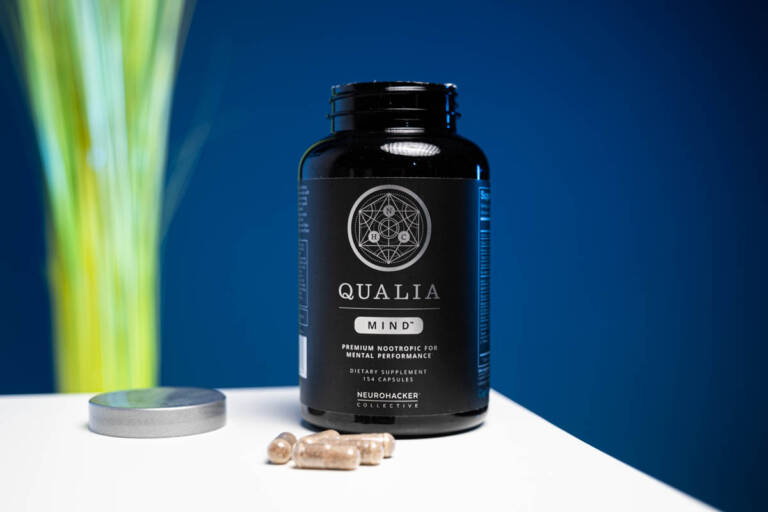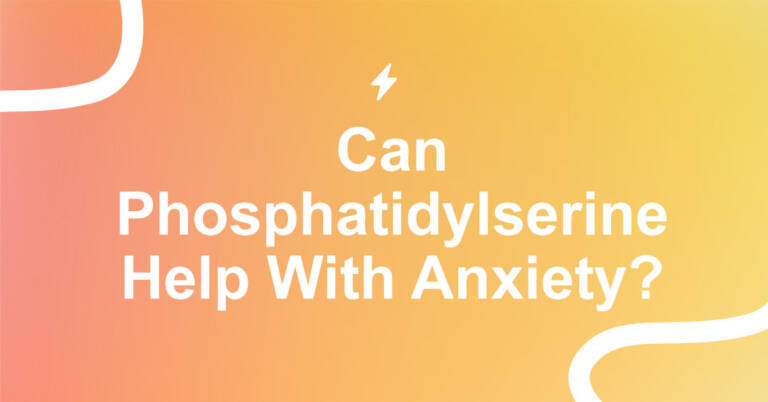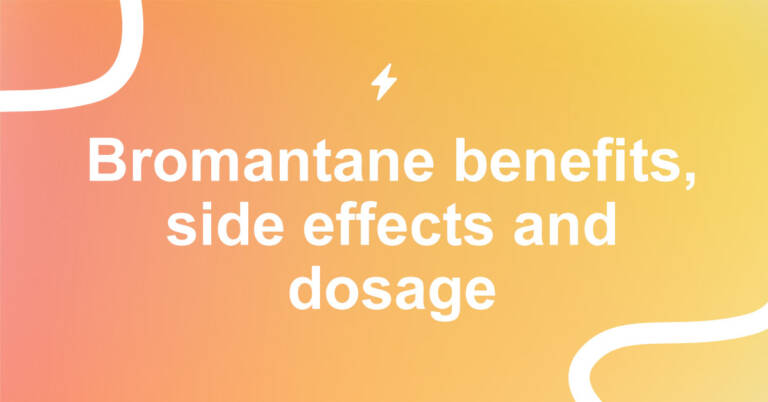Racetams’ popularity has been growing in the past years. Pramiracetam and phenylpiracetam are two racetams from the same family used for enhancing cognitive function. But how do they differ, and which is better? Check my pramiracetam vs phenylpiracetam comparison.

What Are Racetams?
Racetams are a family of drugs and synthetic nootropics that can enhance cognition. They are most known for the piracetam, which is the “original” nootropic.
Changes in the base structure of a racetam, helped scientists synthesize different racetams of various functions, potency, and dosage. In general, the racetams are used for their cognitive boosting properties, such as improvements in focus, learning, memory, attention, brain fog and also supporting mood, fatigue, and overall brain health.
However, the main downside of racetams is they are mainly underresearched. We especially lack studies on the healthy human population. Most studies are still done on animals or people with certain disorders, such as brain injuries or Alzheimer’s disease.
Looking on the bright side, some of the compounds from the racetam family are more researched than others and some of them show promising effects on our cognition. Since interest in racetams is growing among biohackers & nootropic enthusiasts, research of those compounds continues.
There are 7 main racetams:
- piracetam
- aniracetam
- pramiracetam
- phenylpiracetam
- coluracetam
- oxiracetam
- fasoracetam
Based on the research done, keep in mind you can suffer from some side effects when taking racetams. Those side effects vary from mild headaches, moodiness, fatigue to nausea or insomnia.
If you do decide to try racetams, you can get many of them online, however, they are not legal in every country, so it’s best to check the legal status of a racetam you’d buy in your country.
Moreover, due to a lack of research, it’s safer and more efficient to go with some of the highest-quality nootropic supplements that have proven effects. Check them out here.
If you’re interested in pramiracetam or phenylpiracetam, read further to learn more about each of the compounds and comparison between the two.
Pramiracetam
Pramiracetam comes from a family of racetams, initially synthesized from piracetam. [*] It was first developed by Parke-Davis scientists in 1979. Similar to other racetams, it lacks quality research but shows some effects in humans.
Pramiracetam is a nootropic since it benefits our focus, attention, verbal fluency, overall cognition, and brain performance. Despite being under-researched and having little information about its mechanism of action, it grows in interest.
It was first developed for people with brain injuries, which is why most of the studies on people are done on people with some cognitive disorders, such as memory loss and cognitive problems resulting from a head injury. [*]
To understand the potency, potential benefits, side effects, and dosages, it is important to understand the mechanism of action of a compound first.
Unfortunately, the mechanism of work of pramiracetam is not yet completely understood. However, initial research has shown some of the potential mechanisms of action:
- Pramiracetam may increase high-affinity choline uptake (HACU) which influences the synthesis of the neurotransmitter acetylcholine [*]
- Pramiracetam may also influence the adrenal hormones cortisol and aldosterone [*] [*]
- Pramiracetam may boost nitric oxide production in our brain [*]
The potential mechanisms of action are similar in all of the racetams. However, most of the studies were done on animals or people with some cognitive disorders and we lack quality clinical trials on healthy people.
Nevertheless, let’s look at what the current studies show about the benefits of pramiracetam.
Pramiracetam Benefits
A handful of preliminary studies were published since the synthesis of pramiracetam and those have shown some potential benefits for healthy humans. Please keep in mind that we still need further clinical studies to fully confirm those benefits for healthy humans.
It May Improve Memory
Most research on pramiracetam in humans and animals shows the benefits of pramiracetam for memory.
A pilot study with 35 elderly people with memory loss showed that people who were given pramiracetam had greater memory improvements than people who did not receive it or were only part of memory training. [*] However, keep in mind that the relationship between affective state and memory is complex and more research has to be done in this field.
A placebo-controlled study of 24 healthy individuals showed that pramiracetam was able to partially reduce the memory impairments in younger and older participants induced by scopolamine (a drug that impaired episodic memory and selective attention). [*]
Another double-blind placebo-controlled study in young men who suffered from head trauma showed some improvements in memory and cognitive function. [*] However, more clinical trials should be done to replicate those findings.
One study also shows promising effects of pramiracetam on reducing symptoms of amnesia, pramiracetam being more efficient and potent than piracetam. [*]
It May Support Recovery After Brain Trauma
The majority of studies on pramiracetam focused on the benefits of pramiracetam on memory loss, memory formation, and symptoms of amnesia.
However, there is also some evidence on improved memory in men with severe brain injuries after six weeks of supplementing pramiracetam. [*]
Another preliminary study in people with mild craniocerebral trauma showed reduced symptoms such as headache, nausea, and dizziness. There were also some improvements in orientation and feeling among those participants. [*]
Pramiracetam Side Effects
Current evidence shows improvements in memory formation, recall, neuroprotection, and faster recovery after brain trauma and injuries. However, due to the lack of high-quality studies and clinical trials we cannot claim that pramiracetam is a safe compound for long-term supplementation. Some users report experiencing headaches, dizziness or issues with sleep.
If you experience any side effects, you should consult your doctor.
Pramiracetam Dosage
There is currently a lack of evidence for a safe and effective dosage of pramiracetam for healthy humans. Studies in humans show the use of 400 mg thrice daily or 600 mg twice daily, which counts for 1200 mg of pramiracetam daily. [*] There is a lack of human research and clinical evidence to support those claims.
There is also limited research available on how & when to take it and the information about cycling it. If you decide to experiment with pramiracetam, do not exceed 1200 mg daily to avoid potential side effects.
What is Phenylpiracetam?
Phenylpiracetam is another racetam developed from piracetam, the original nootropic. Phenylpiracetam, known also as Phenotropil is basically a piracetam with a phenyl group which makes it more efficient in crossing the blood-brain barrier. Furthermore, this makes phenylpiracetam more potent than piracetam. [*]
Studies on phenylpiracetam, also a member of the racetam family, show that it is more neuroprotective than piracetam, it may also have psychostimulatory effects and it seems to require lower doses than piracetam to achieve similar benefits. [*]
Studies on phenylpiracetam are lacking, similar as with other racetams. However, there are some studies that show improved cognition in people suffering from cognitive decline or organic brain lesions, as well as some studies that show reduced anxiety and depression, especially in stroke patients. [*]
As with other nootropics from the racetam family, it is currently not approved by the FDA. It falls into the “gray” area since it is unregulated in the US. On the other hand, in Russia, patients can get it on prescription.
Phenylpiracetam influences acetylcholine, NDMA, dopamine, serotonin, and GABA receptors in the brain which influence cognitive performance, memory formation, learning, and motivation. Studies show that only low dosages of phenylpiracetam are effective in activating and properly affecting the mentioned neurotransmitters in the brain. Higher doses can do the opposite. [*]
Phenylpiracetam Benefits
We’re still early in the research to determine the exact mechanisms, efficacy, and long-term safety of phenylpiracetam. However, current studies show some potential benefits for humans.
May Boost Energy Levels
Some of the users report the benefits of having more energy after supplementation of phenylpiracetam. Patients with chronic fatigue syndrome and ischemia in one study have reported less fatigue and more energy after one month of supplementing this racetam. [*]
Despite showing some benefits for our energy levels, phenylpiracetam is still not studied enough in a healthy population.
May Improve Our Memory
Some studies show potential memory improvement properties of phenylpiracetam, but we again lack studies in a healthy population. [*][*]
Other Benefits
Studies on patients with brain injuries or trauma show improved brain activity and cognitive-enhancing effects. [*] [*]
Results of studies in seizure patients showed decreased seizures with the support of phenylpiracetam. [*] [*] However, due to interactions with the medications and the lack of studies, consult your doctor before using phenotropil.
Phenylpiracetam Side Effects
Considering phenylpiracetam is an underresearched nootropic it is highly advisable to be careful with the supplementation. Even though it seems to be non-toxic, I don’t recommend supplementing it.
Users reported the following side effects: [*]
- headaches
- nervousness
- irritability
- increased anger & aggressiveness
Phenylpiracetam Dosage
We cannot yet determine the optimal daily dosage of phenylpiracetam but based on the current guidances it is taken at a dose of 100-200 mg acutely, which you can take up to three times per day. The total daily dosage should not exceed 600 mg. [*]
Please consult your doctor before supplementing it.
Pramiracetam Vs Phenylpiracetam: Similarities
Both of the compounds are derived from a powerful racetam, piracetam, and are believed to be stronger than piracetam. Pramiracetam is known as being one of the strongest nootropic supplements on the market, while phenylpiracetam with its addition of a phenyl group is more efficient in crossing the blood-brain barrier. It’s also regarded as being 30-60 times more potent than piracetam.
Both of the compounds are unregulated by the FDA in the US. Phenylpiracetam is used in Russia as a prescription medicine. Despite not being approved for medical or non-medical use of pramiracetam, researchers have considered it may be beneficial in treating memory loss & cognitive decline.
As previously mentioned, both racetams lack safety and efficacy scientific & clinical data. The available studies on those nootropics show potential benefits for individuals with brain injury, trauma, or cognitive decline.
There are also some studies that show promising effects on brain function, focus, anxiety, depression, overall mood, and mental performance. However, we are still in the early phase of researching those compounds.
Both of the mentioned racetams are man-made (synthetic) and can cause some adverse effects, unlike other nootropics that are natural and side-effects free.
Pramiracetam Vs Phenylpiracetam: Differences
Both racetams show promising effects on improved cognition, however, studies on prramiracetam are showing more benefits for memory and retrieval.
On the other hand, phenylpiracetam is considered to be more effective in treating anxiety and depression.
There is also a difference in the dosage of each of the mentioned nootropics. A dose of 400 mg thrice daily or 600 mg twice daily is considered to be optimal for pramiracetam. On the other side, a lower dosage of phenylpiracetam is advisable, with taking 100-200 mg acutely and can be taken up to three times daily. [*][*]
Which is better?
If you want to enhance your cognition, then both of the racetams may have similar effects. If you would also like to improve your mood, anxiety, and depression, then phenylpiracetam may be better.
However, considering their complicated legal status and lack of medical & clinical data, I don’t recommend supplementing any of the two nootropics from the racetam group.
If you anyway decide on taking any of the mentioned nootropics, please seek medical advice. It is especially advisable to be careful when taking other drugs.
Verdict
We currently don’t recommend supplementing either pramiracetam or phenylpiracetam because of the lack of scientific findings and data. Moreover, we don’t have enough data to determine their safety and overall influence on our health in the longer term.
The good news is that we have many scientific indications for other nootropics and supplements on the market if you are looking for improved brain function, focus, mood, or health. Check the top-rated ones here.






